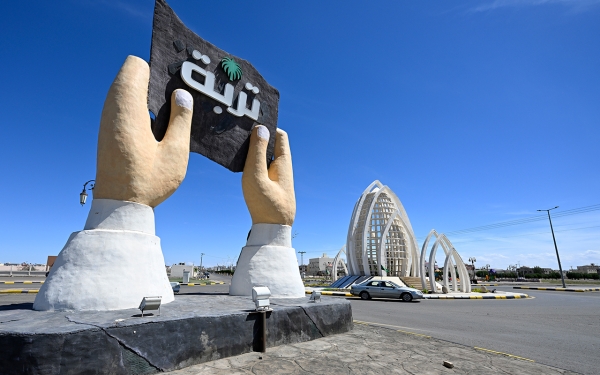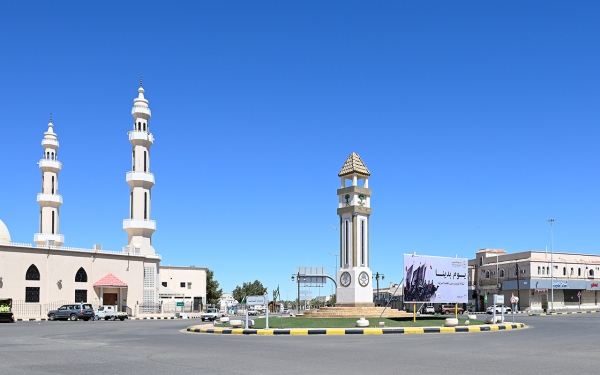



Turbah Governorate (romanized: Muḥāfad͟hat Turubah) is a governorate in the southern part of the Makkah al-Mukarramah Province in the western of the Kingdom of Saudi Arabia, about 150 km from Taif. Part of the Upper Najd Plateau, it has a desert climate; cold in winter and hot in summer.
History and designation of Turbah
Turbah’s history extends all the way back to pre-Islamic times, and many accounts exist of its origin and name. It is the first town in Wadi Turbah to host a population and engage in agriculture. Due to its proximity to Makkah al-Mukarramah, a bridge of human and commercial communication was created extending to the cities of Hijaz, as Turbah was supplying these lands with agricultural produce, most importantly dates. It is located between two of the most important landmarks of the Arabian Peninsula: Harrat al-Buqum, formerly dubbed Harrat Najd because it broke off from the Hijaz Harrat, and the second landmark is Hadan Mountain, which overlooks Turbah from the west.
Human activity continued in Turbah to the early Islamic age. It was a major stop for caravans taking various routes crossing Wadi (Valley) Turbah, to meet at the center of civilization and commercial weight in the Arabian Peninsula, Makkah al-Mukarramah. It is named after Wadi Turbah, which extends four hundred km from the peaks of the Hijaz Mountains to the extremities of the Najd Desert and intersects with many valleys and mountain paths, including Baydah, Ardah, al-Salim, al-Khumrah, and Kara’, which are main tributaries for freshwater supply.
Turbah rose to prominence during the pre-Islamic and early Islamic ages. It was mentioned in the book History of the Arabs before Islam in the incident between Bani Amer and one of the commanders of Abraha, the Abyssinian, in a canyon leading to Turbah, when Abraha invaded Makkah al-Mukarramah to demolish al-Kaaba al-Musharrafa. Turbah was also mentioned by Abu al-Baraa Amir Bin Malik, who was famous for saying ‘Turbah is our homeland.’ Turbah was also mentioned in the early Islamic age, in 628, when Prophet Muhammed peace be upon him (PBUH) sent Umar Bin al-Khattab among thirty other men to Hawazin in Turbah, as cited by the prophetic biography al-Raheeq al-Makhtum (The Sealed Nectar).
Location of Turbah
Turbah Governorate has a privileged position as the gateway to Najd and the key to Hijaz, located at longitude 38.41 and latitude 23.21. It is bordered from the west by Taif Governorate; from the east by Ranyah Governorate; from the south by al-Bahah Province; and from the north by al-Khurmah Governorate.
Turbah is classified as a Category (B) governorate according to the level of civil service provision in the governorate. It administratively supervises nine centers It has 41,769 inhabitants, according to the 2022 Saudi Census.
Turbah Governorate is situated in a territory of contrasting terrain, surrounded by many mountains, chiefly Hadan Mountain, a towering peak cited by historical and geographical sources, as well as ‘In Mountain located west of Turbah, between Taif and Turbah, and Saq Mountain, also located west of Turbah, between Taif and Turbah.
The governorate is distinct for its diverse array of archaeological sites; it contains Wadi Turbah, extending from the Sarawat Mountains, as well as the Bin Jawfi Dam, which is connected to several small valleys such as Wadi Hawal, Wadi al-Khumrah, and Wadi Ziman. The city of Turbah also contains archaeological sites, like Hadan Mountain; a long-stretched, high-altitude black mountain, from which several mountain paths descend, including al-Ree’, Sahoubiya, and al-Ayna. Turbah also includes Harrat al-Buqum comprised of black mountains in the south of the governorate, which is a rugged region from which valleys cascade, such as Wadi Kara, formerly known as Harrat Nuwaisib.
Agriculture in Turbah
Turbah is considered an agricultural governorate because of its fertile soil and abundance of water. It is one of the governorates renowned for date palm cultivation and has been known from bygone times as the land of a million palms. Palms account for two-thirds of the governorate's area. Turbah’s advantageous location overlooking its valley, plentiful fresh water, and fertile agricultural soil, provide many opportunities for locals to pursue a broad array of diverse livelihoods, with many inhabitants engaging in agriculture, as date palms are the cornerstone of farming in Turbah.
Abundant production of date crops allows Turbah Governorate locals a great opportunity to export their produce to some neighboring areas, such as al-Bahah Province, the governorates of Taif and Jeddah, and Makkah al-Mukarramah Province, whereas some of their produce goes to date factories in the Kingdom. The governorate is also known for growing citrus trees and vegetables in commercial quantities. This comes in addition to grapes and some fruit species, plus wheat, maize, barley, and all kinds of vegetables.
Besides agricultural activity, many residents of the grasslands, which neighbors Turbah, raise large numbers of cattle and camel herds. They are keen on rearing purebreds and good species in terms of color and production of large quantities of milk. Some of the most prominent species bred in the region are al-Maghatir, al-Shuqr, Majahim, coastal, and Omani. The herds graze in grasslands, adjacent to Hadan and al-Harrah.
Transport services in Turbah
As a result of its unique location, Turbah Governorate is linked to many of its villages and to other governorates via a network of modern roads, including the 180-km Turbah-Taif Road; the 90-km Turbah-al-Khurmah Road; the 195-km Turbah-al-Bahah Road; and the 85-km Turbah-Ranyah Road via al-Harrah region.
The nearest airport, Taif International Airport, is the city's main airport. Located 134 km away, it is an international airport with a capacity of approximately 550 thousand passengers per year.
The governorate can be reached by land via secondary Highway 273, which is the main land access route to and from Turbah.
Historical monuments and tourist attractions in Turbah
Turbah Governorate and its vicinity include many archaeological monuments and tourist attractions, including the ruins of ancient houses built on hilltops and mountaintops, in addition to a number of forts, such as the famous Kara Fortress. It also contains ancient wells and dams, numerous ancient archaeological writings and inscriptions dating back to the pre-Islamic period, as well as many ancient trails that passed through Turbah.
Historical sites include:
Shanqal: An ancient residential site atop the plateau separating Wadi Turbah and Wadi Kara, located north of the road leading to Wadi Kara. It is a fortified fortress called al-Murabba’a (The Square), around which other archaeological houses scatter.
Munaif: An ancient, dilapidated archaeological site, in which the famous battle of Turbah took place on May 25, 1919. As a result of the battle, the site descended into a wreck and its ruins are still visible today.
Al-Muhyi Palaces: An ancient residential site atop a high knoll, located on the left-hand side when heading from al-Khurmah towards Turbah Governorate by about three km before Turbah. The site oversees a forest of privately owned date palms, surrounded by a large wall with one entrance and several castles from all sides.
Ramadan: Turbah’s old market, which got its name from a massive fire that broke in it and devoured all its residences that were built from palm fronds, strips, and trunks. Later, the buildings were replaced with mud constructions and were surrounded by a wall with two gates—a southern and a northern— and later became the headquarters of the emirate of King Abdulaziz in Turbah.
Al-Bughaitha and Abu Maras Mountains: Located in al-Ilba hamlet affiliated with Turbah Governorate, the site is renowned for its archaeological stone-built monuments that indicate ancient settlement activity.
Related quizzes
Related articles


